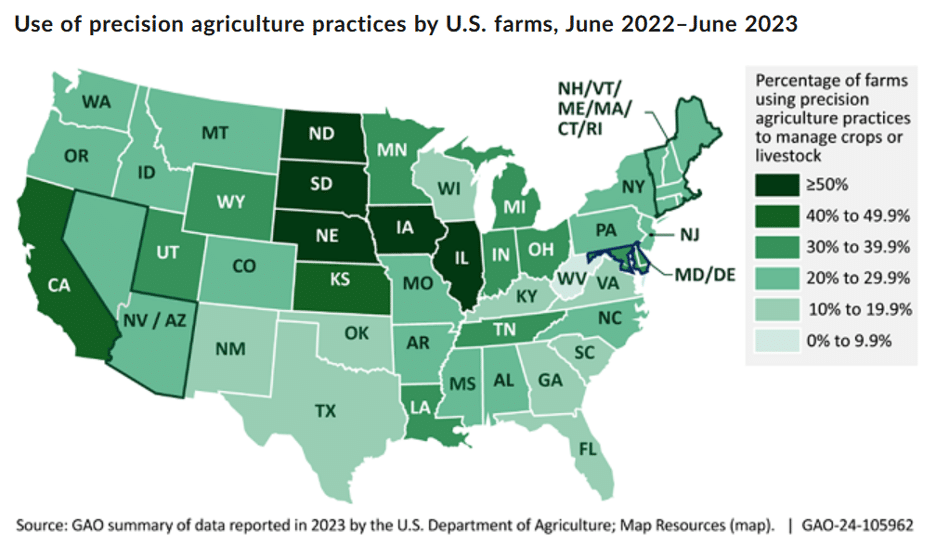The major barrier to wide adoption of precision agriculture over the years has been the lack of broadband and wireless service in rural areas. But as broadband service spreads, other barriers are becoming more apparent, notes the Government Accountability Office (GAO) in a new report.
The success of various government programs aimed at encouraging and supporting precision agriculture could depend on the nation’s ability to address these other barriers. And providers serving agricultural areas should be aware of these concerns as they seek to provider understanding and support for their communities.
“While precision agriculture technologies, such as variable rate fertilizer applications and yield monitoring, have been available since the 1990s, only 27 percent of U.S. farms or ranches used precision agriculture practices to manage crops or livestock, based on 2023 U.S. Department of Agriculture (USDA) reporting,” GAO noted in the report, titled Precision Agriculture: Benefits and Challenges for Technology Adoption and Use.
Key concerns cited by the GAO include:
- Citing U.S. Department of Agriculture research, GAO noted that farmers buy precision ag equipment from multiple providers, and little information is available about interoperability between providers.
- Organizations seeking to standardize precision ag equipment may not include all stakeholders in the process. Among these stakeholders: broadband and wireless providers, electronics manufacturers, farm implement manufacturers, software developers, agricultural experts, government agencies and others.
- A potential legal barrier is the question of who owns the data that farmers gather through precision ag systems. To gain the maximum benefits from precision ag, farmers need to be able to share data with an extension service or other experts.
- Cybersecurity is another concern. Farmers will want to ensure that competitors cannot get access to their data.
- Smaller farms may not be able to afford combines or tractors with the latest technologies because this equipment can cost hundreds of thousands of dollars.
- The connectivity issue, while improving, is not solved for large portions of the country.




